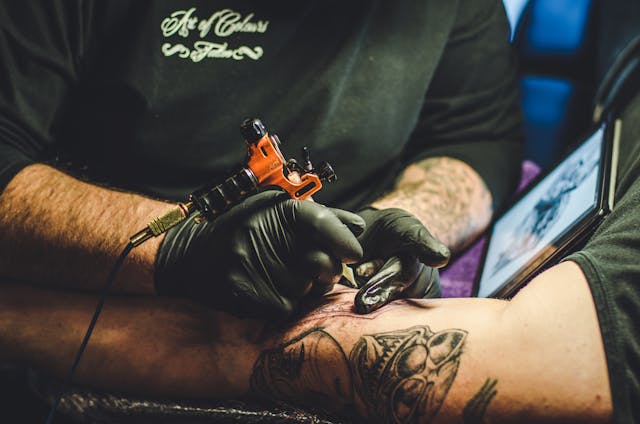5 Cutting-Edge Technologies Revolutionizing Tattooing
In recent years, the art of tattooing has experienced a significant transformation, fueled by advancements in technology. From the tools used by artists to the methods for removing unwanted tattoos, cutting-edge innovations have revolutionized the industry. Below, we explore five technologies leading this evolution and how they're shaping the future of tattooing.
1. 3D Printing in Tattoo Design
One of the most intriguing technological advancements in the tattoo industry is the use of 3D printing. Though primarily associated with manufacturing and prototyping, 3D printing has found a unique niche in tattooing. Artists can now create precise 3D models of their designs, providing clients with a tangible preview of their tattoos before any ink touches skin.
This technology allows for immaculate detail and customization, enabling artists to experiment with complex designs and refine them to perfection. Clients benefit from being able to visualize the final product more accurately, which can significantly enhance the consultation process. By integrating 3D printing, tattoo studios can offer a more interactive and personalized experience, setting a new standard in client satisfaction.
2. Laser Tattoo Removal
The demand for tattoo removal has surged, driven by evolving personal tastes and the desire to remove poorly executed or outdated tattoos. Laser technology has become the cornerstone of modern tattoo removal, with advancements making the process safer and more effective than ever.
The latest laser technology uses ultra-short pulses to break down ink particles in the skin, which are then naturally absorbed by the body. This method minimizes damage to surrounding tissue, reducing the risk of scarring and speeding up recovery times. Clinics offering the best Toronto tattoo removal services are at the forefront, leveraging state-of-the-art lasers to deliver excellent results.
These new laser systems are capable of targeting a broader range of ink colors, including traditionally stubborn hues like green and blue, making complete removal more achievable. As laser technology continues to evolve, we can expect even greater improvements in efficiency and comfort, making tattoo removal a more accessible and appealing option for those seeking a fresh start.
3. Augmented Reality (AR) Tattoo Apps
Augmented reality has emerged as a game-changer in various industries, and tattooing is no exception. AR tattoo apps allow clients to visualize how different designs will look on their skin in real-time, using smartphone cameras and sophisticated software.
These apps enable users to virtually "try on" tattoos, adjusting size, placement, and color to see how they fit with their body and style. This interactive experience not only helps clients make more informed decisions but also reduces the likelihood of tattoo regret and the subsequent need for removal.
For artists, AR technology is a powerful tool that facilitates better communication with clients, ensuring their vision aligns with the artist’s capabilities. As AR technology becomes more refined, it will continue to enhance the tattooing process, offering a seamless blend of digital and physical art.
4. Robotic Tattooing Machines
Automation is making its way into the tattooing world with the development of robotic tattooing machines. These machines promise to deliver precise and consistent results, utilizing advanced robotics to replicate designs with exacting accuracy.
While robotic tattooing is still in its early stages, its potential benefits are significant. For complex or repetitive designs, machines can maintain steady pressure and consistent speed, minimizing human error and fatigue. This technology could be especially useful in medical tattooing, where precision is paramount, such as reconstructive work following surgery.
Despite the promise of robotic tattooing, it’s unlikely to replace human artists entirely. Instead, it may serve as a valuable tool for specific applications, complementing the creativity and intuition that human artists bring to the craft. As the technology develops, it will be fascinating to see how it integrates into traditional tattooing practices.
5. High-Tech Tattoo Inks
Innovation in tattoo ink composition is another area where technology is making strides. Scientists and researchers are developing high-tech inks that offer enhanced safety, longevity, and even new functionalities.
Biocompatible inks are designed to reduce the risk of allergic reactions and complications, which are concerns with traditional inks. These inks often use organic pigments and are subject to rigorous testing to ensure safety and stability.
Another exciting development is the creation of UV-reactive and color-changing inks. These inks can change color in response to temperature, light, or other environmental factors, opening up new possibilities for dynamic and interactive tattoos. Additionally, researchers are exploring inks that can monitor health metrics, such as glucose levels, by changing color, potentially turning tattoos into health-monitoring devices.
Conclusion
The tattooing industry is undergoing an exciting transformation, with technology playing a pivotal role in shaping its future. From design and application to removal and ink innovation, these cutting-edge technologies are enhancing the art form and broadening its appeal.
As these technologies continue to evolve, they promise to make tattooing more accessible, safe, and creatively fulfilling for both artists and clients. Whether you’re seeking the best Toronto tattoo removal service or looking to explore the latest in tattoo design and application, the future of tattooing holds endless possibilities.
Through the integration of these advancements, tattooing is set to become more than just body art; it will become a testament to the harmony between technology and creativity. The journey is just beginning, and the results are bound to be as varied and vibrant as the tattoos themselves.

